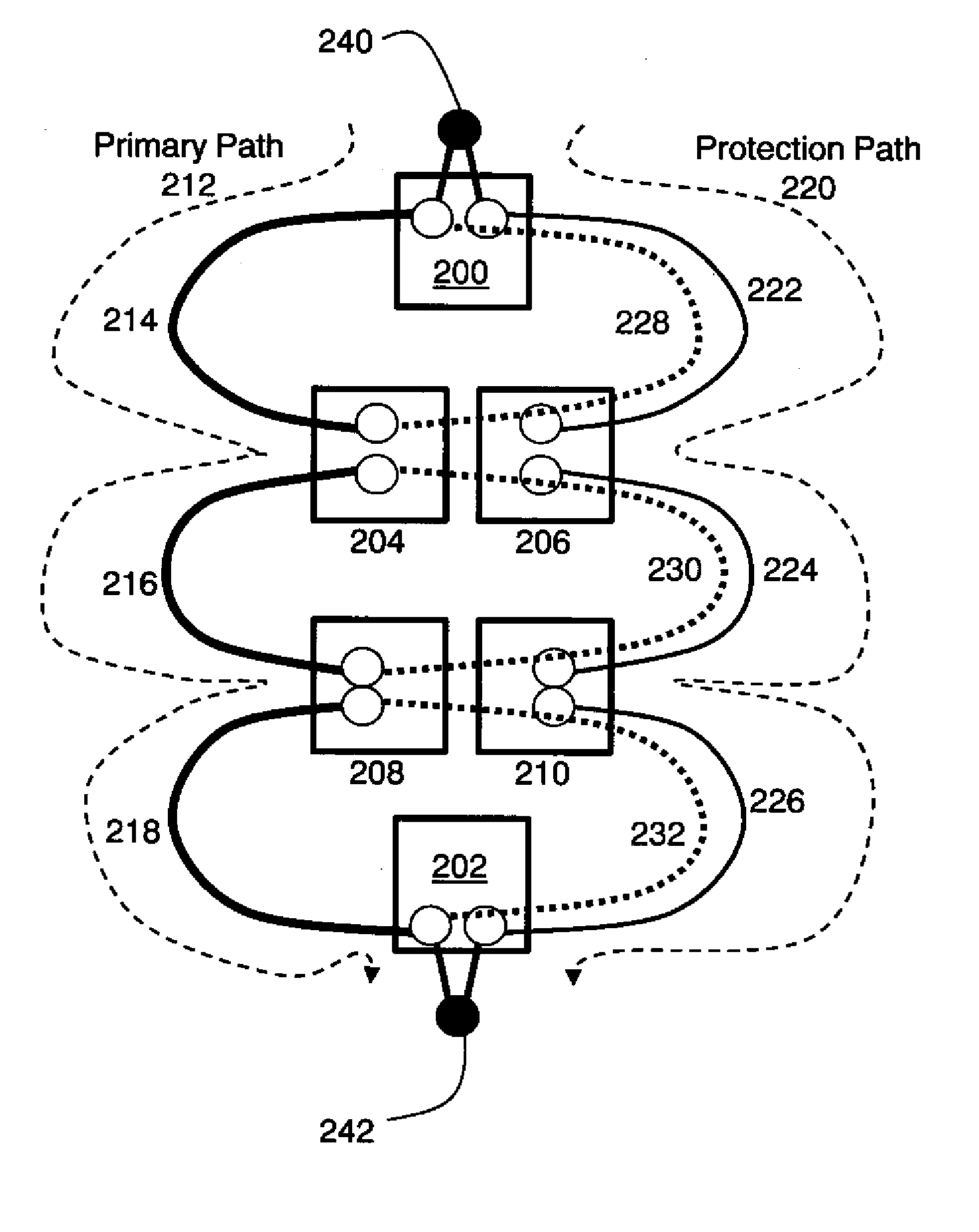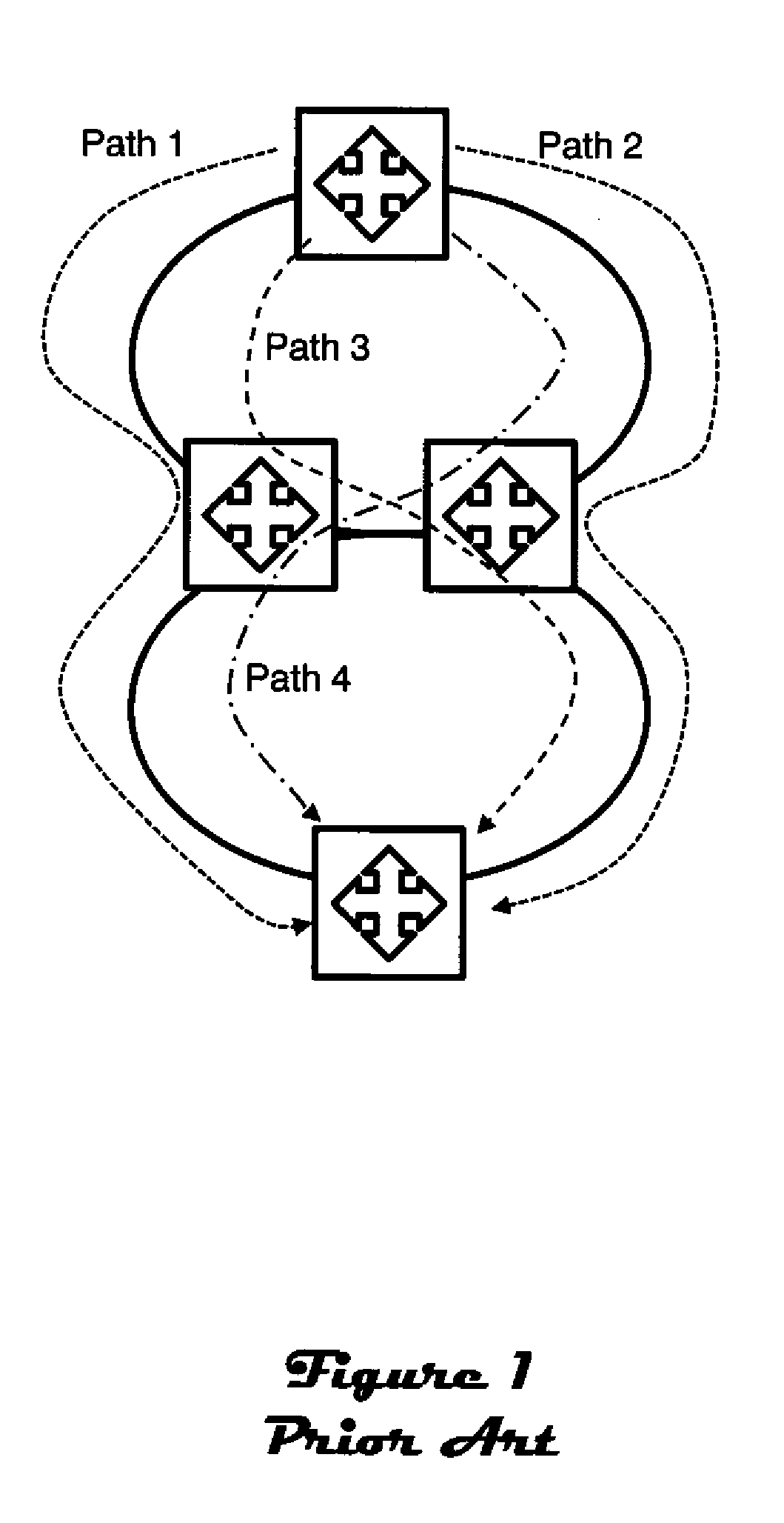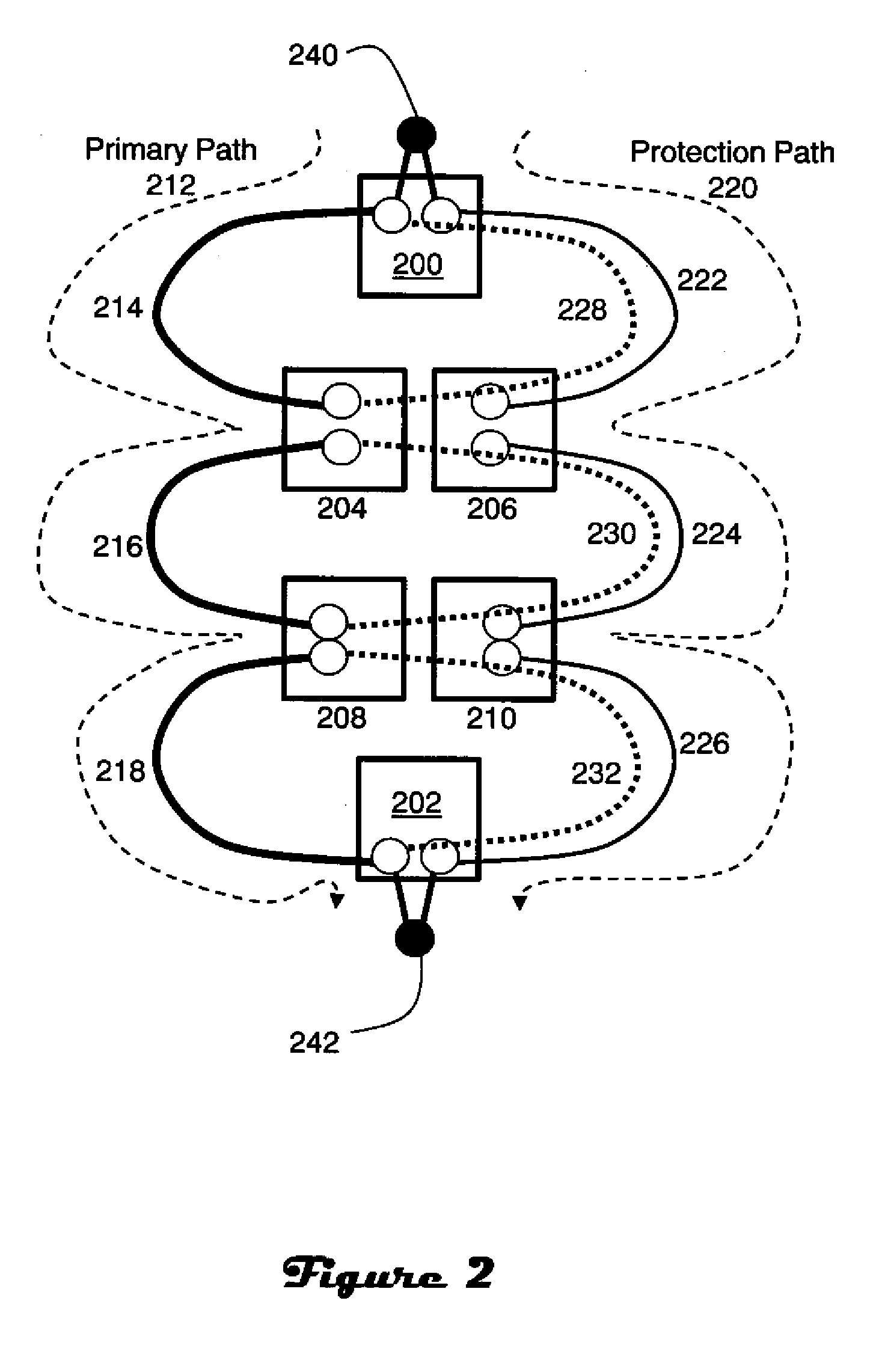Protection for provider backbone bridge traffic engineering
- Summary
- Abstract
- Description
- Claims
- Application Information
AI Technical Summary
Benefits of technology
Problems solved by technology
Method used
Image
Examples
Embodiment Construction
[0018]Data communication networks may include various computers, servers, nodes, routers, switches, bridges, hubs, proxies, and other network devices coupled to and configured to pass data to one another. These devices will be referred to herein as “nodes.” Data is communicated through the data communication network by passing protocol data units, such as Internet Protocol packets, Ethernet Frames, data cells, sections, or other logical associations of data, between the nodes by utilizing one or more communication links between the nodes. A particular protocol data unit may be handled by multiple nodes and cross multiple communication links as it travels between its source and its destination over the network.
[0019]The particulars described herein are for purposes of describing the illustrated embodiments of the present invention to provide what is believed to be a useful and readily understood description of principles and conceptual aspects of the invention. No attempt is made to ...
PUM
 Login to View More
Login to View More Abstract
Description
Claims
Application Information
 Login to View More
Login to View More - R&D
- Intellectual Property
- Life Sciences
- Materials
- Tech Scout
- Unparalleled Data Quality
- Higher Quality Content
- 60% Fewer Hallucinations
Browse by: Latest US Patents, China's latest patents, Technical Efficacy Thesaurus, Application Domain, Technology Topic, Popular Technical Reports.
© 2025 PatSnap. All rights reserved.Legal|Privacy policy|Modern Slavery Act Transparency Statement|Sitemap|About US| Contact US: help@patsnap.com



